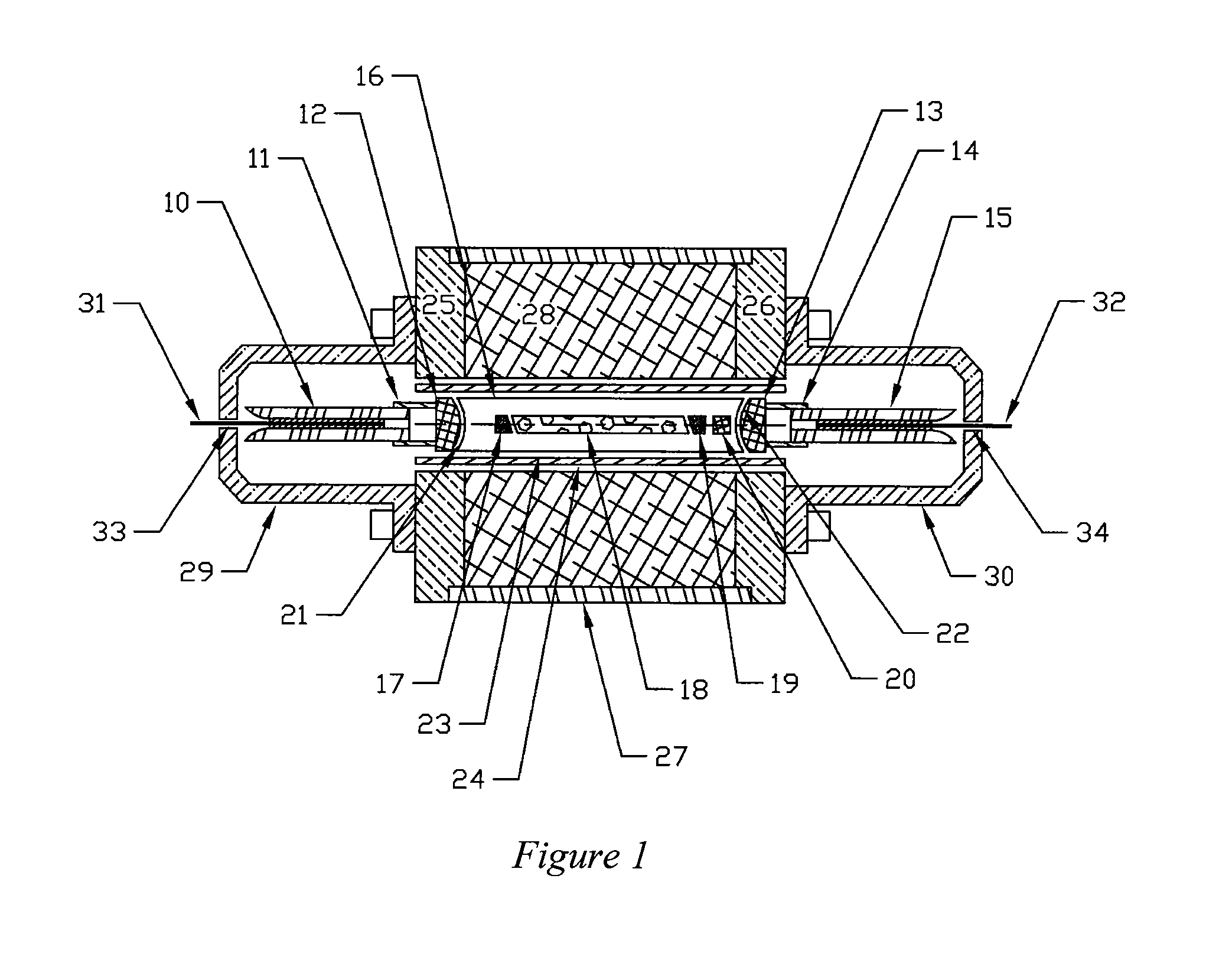Compact, high power, fiber pigtailed faraday isolators
- Summary
- Abstract
- Description
- Claims
- Application Information
AI Technical Summary
Benefits of technology
Problems solved by technology
Method used
Image
Examples
Embodiment Construction
[0028]Reference is now made in detail to specific embodiments representative of the present invention to illustrate the practice of the invention as contemplated by the inventors. Additional features are described in connection with each embodiment. Alternate embodiments will be apparent to those of ordinary skill in the art in light of these descriptions.
[0029]FIG. 1 is a side cross-sectional view of a Polarization Independent Faraday isolator module according to the invention, wherein monolithic fused silica mode stripping ferrules 10 and 15 are employed. Suitable examples of such ferrules 10 and 15 are described in the disclosure of the above referenced commonly-owned patent application incorporated herein by reference. Input silica fiber 31, monolithic ferrule 10, fused silica sleeve 11 and silica aspheric lens 12 together form a substantially stable and compact mode stripping input fiber collimator assembly. Similarly, an output pigtailed collimator assembly is formed by fiber ...
PUM
 Login to View More
Login to View More Abstract
Description
Claims
Application Information
 Login to View More
Login to View More - R&D
- Intellectual Property
- Life Sciences
- Materials
- Tech Scout
- Unparalleled Data Quality
- Higher Quality Content
- 60% Fewer Hallucinations
Browse by: Latest US Patents, China's latest patents, Technical Efficacy Thesaurus, Application Domain, Technology Topic, Popular Technical Reports.
© 2025 PatSnap. All rights reserved.Legal|Privacy policy|Modern Slavery Act Transparency Statement|Sitemap|About US| Contact US: help@patsnap.com



